Fair After Dark
-
About this Collection
Nighttime at the Fair was the way many would remember their visit to the Louisiana Purchase Exposition. It was a time to sit and enjoy the scenes, listen to the music and singing gondoliers--maybe even visit the Pike.
As evening came to the Fairgrounds, electric lights placed on the inner columns of the Palaces silhouetted these buildings, making them look grander than they did during the day. Changing colors added to the glory of the Cascades. Later the lights would be turned off leaving just bridges and walkways lighted.
Many of the buildings closed in the early evening, but the palaces of Machinery and Electricity were often open late at night. And, of course, the Pike was full of action until it closed at 11 p.m.
-
Festival Hall
Every evening after dark there would be an illumination (a turning on of the lights around the fair). This may seem like nothing to us today, but most people did not use electricity in their homes. They had gas or oil lamps. Seeing thousands of electric lights at one time was amazing.
-
Corner Palace of Electricity
Palace of Electricity at night: The lighted Palace of Electricity at night. The building was surrounded by the lagoon system.
-
Electric illumination of the cascades and of Education and Mines buildings, World's Fair, St. Louis
-
Electricity building main entrance
The lighted Palace of Electricity at night. The building was surrounded by the lagoon system.
-
Festival Hall and Cascades by night, Louisiana Purchase Exposition, St. Louis, U.S.A.
The Exposition buildlers succeeded in making the electrical illuminations the most spectacular feature of the World's Fair, with Festival Hall and the Cascades as the center of beauty ... More than 100,000 bulbs are used to produce the effect on Festival Hall and the Cascades. These light the waterfall and the fountains and bring out every line of the buildings with great clearness.
Three colors are used, white, red and green, and Art Hill with its buildings is made to glow in any one or all three of these colors. All the exhibit palaces are lighted every night.
-
Illumination of the Palace of Electricity
Every evening after dark there would be an illumination (a turning on of the lights around the fair). This may seem like nothing to us today, but most people did not use electricity in their homes. They had gas or oil lamps. Seeing thousands of electric lights at one time was amazing
-
Illumination, from wireless telegraph tower
Part of the adventure of visiting the Wireless Tower at the Fair was the 300 foot ride up to the top on an elevator.
-
Lagoon, east, at night
The main buildings at the Louisiana Purchase Exposition were illuminated for light programs at night. Other areas of the Fair, like the Pike, were lighted by electricity at night.TThe photograph shows the illuminated palaces off the East Lagoon at the Louisiana Purchase Exposition. The Palace of Liberal Arts is in the right foreground.
-
Night at the World's Fair : illuminations on great exhibit buildings reflected in the basin
-
Palace of Electricity illuminated
-
Spirit of the Pacific
A night time view of the sculpture, 'Spirit of the Pacific,' by Isidore Konti, from the steps of Festival Hall overlooking the Grand Basin. Austrian-born sculptor Konti was responsible for the groups and figures on the side Cascades.
-
Transportation Building
The Palace of Transportation displayed the past, present and future of transportation. There was a display of 160 kinds of cars. This included cars that ran using electricity, gas, and steam. There was also an exhibit on the history of trains. Other forms of transportation you could see were carriages, trolley cars and motor boats.
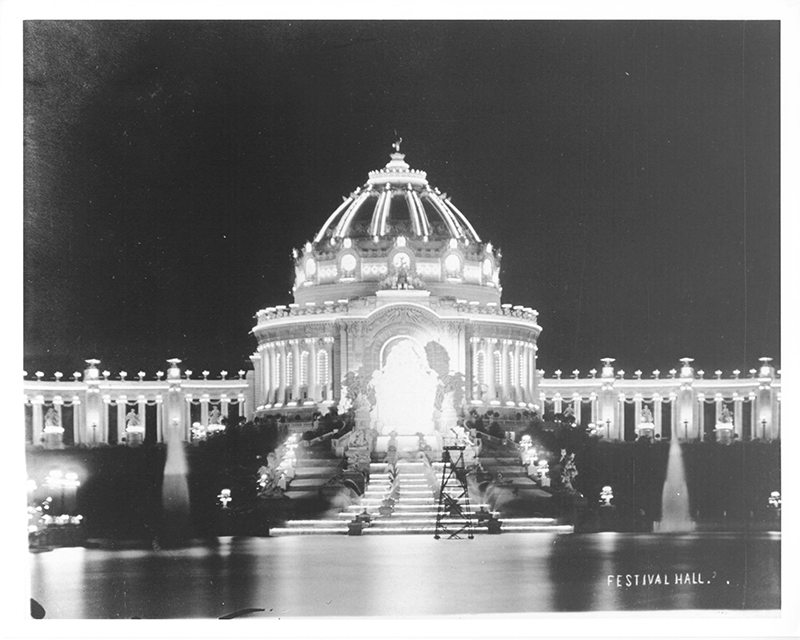 View Image
View Image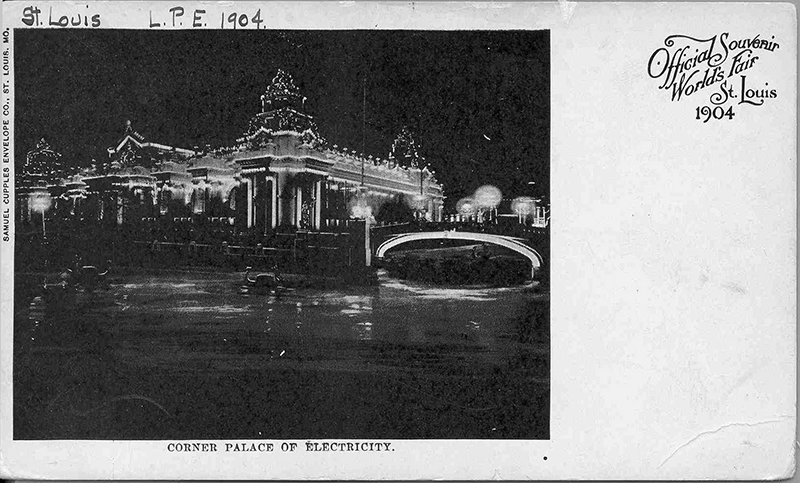 View Image
View Image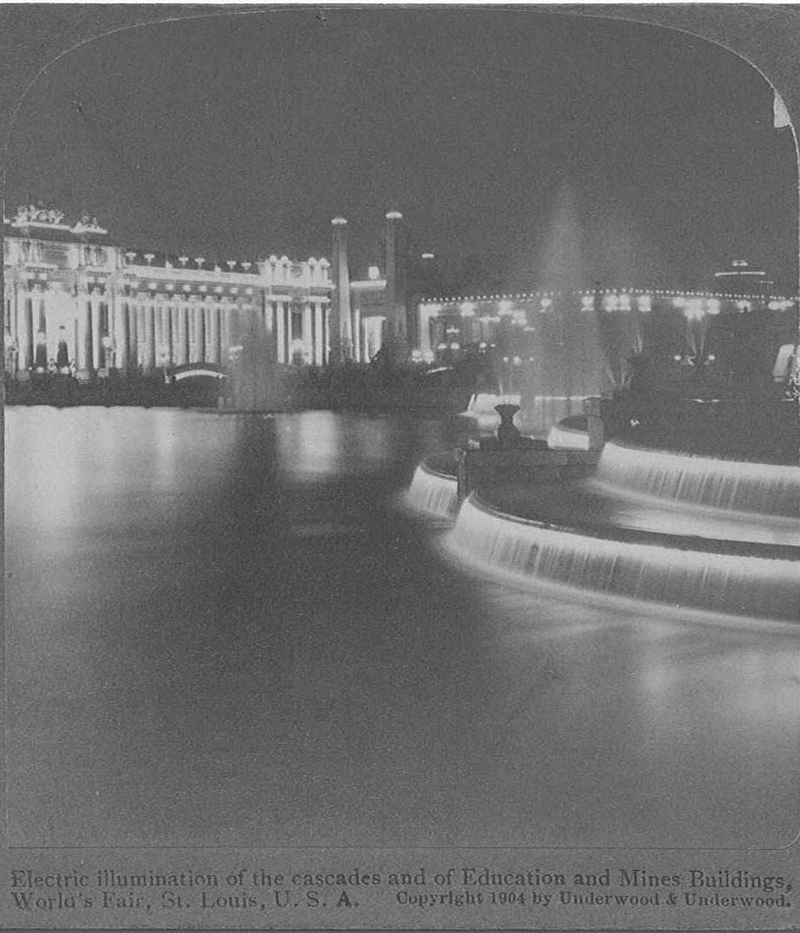 View Image
View Image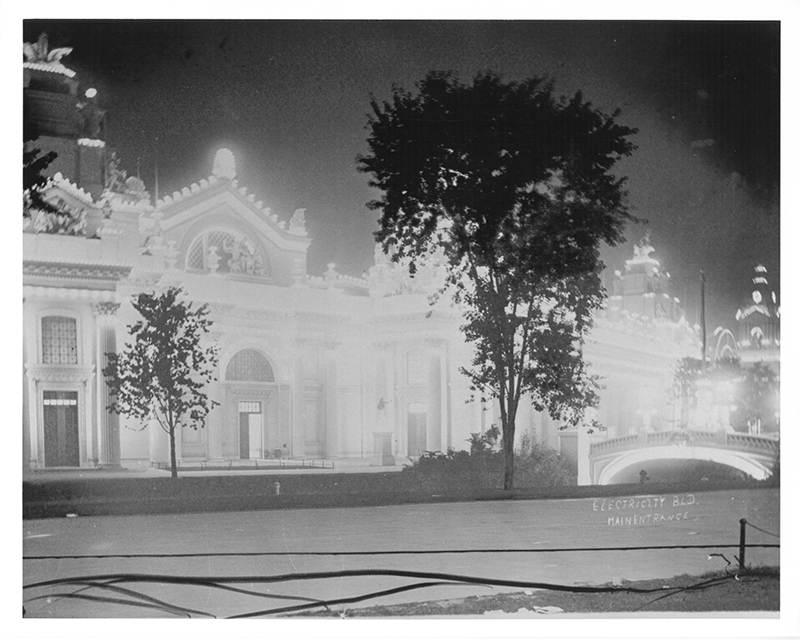 View Image
View Image View Image
View Image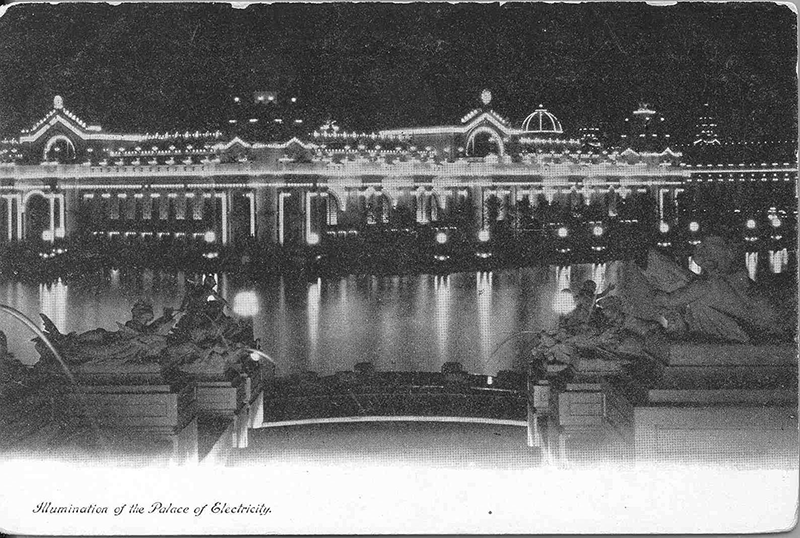 View Image
View Image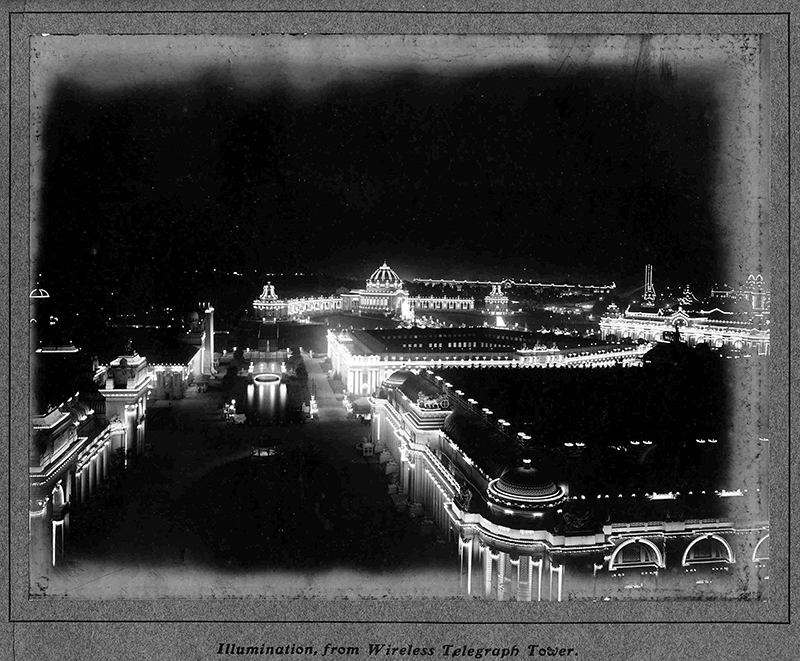 View Image
View Image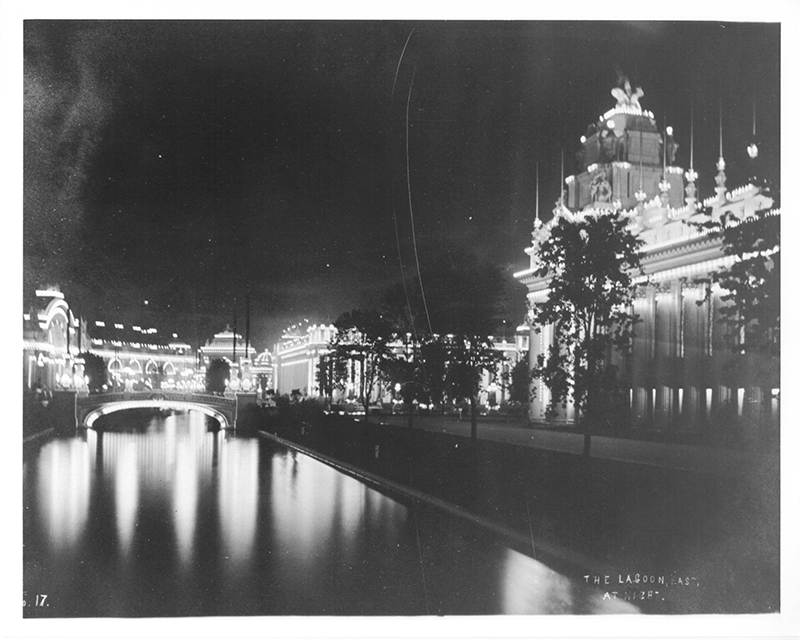 View Image
View Image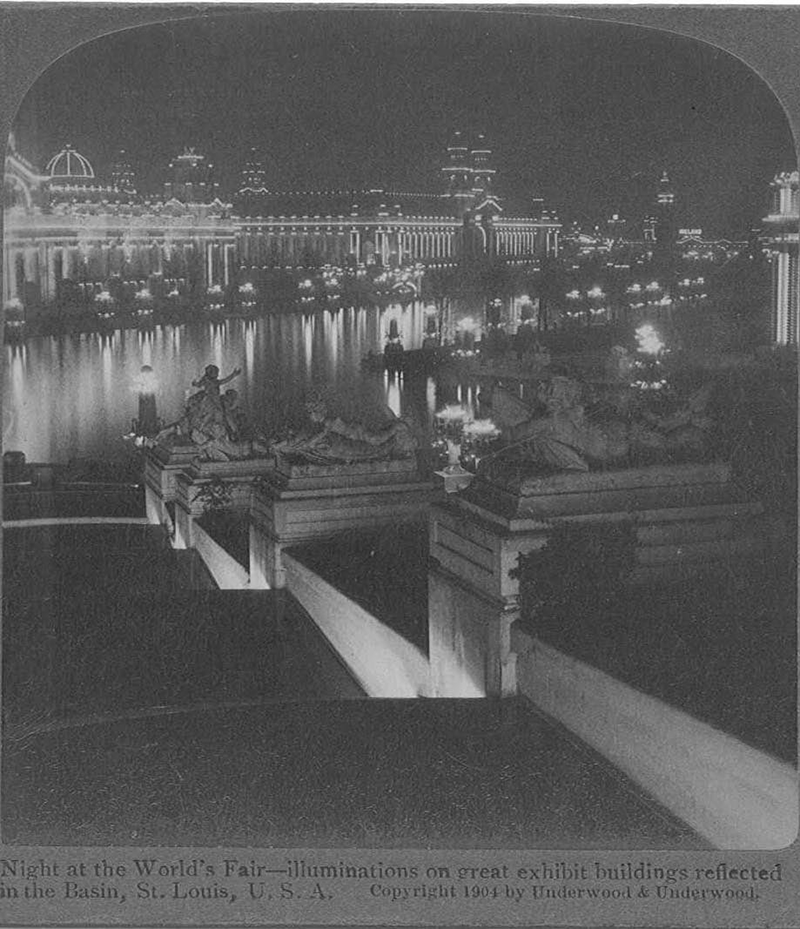 View Image
View Image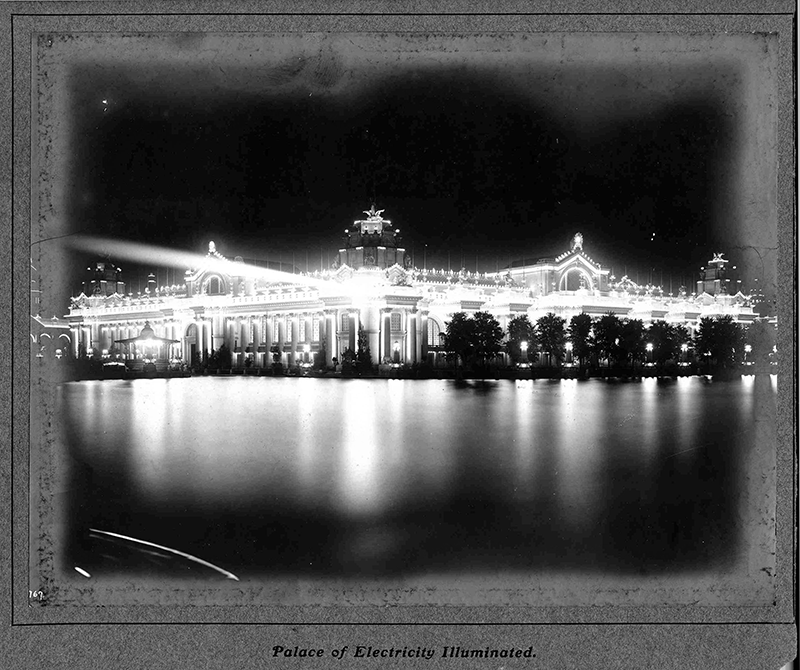 View Image
View Image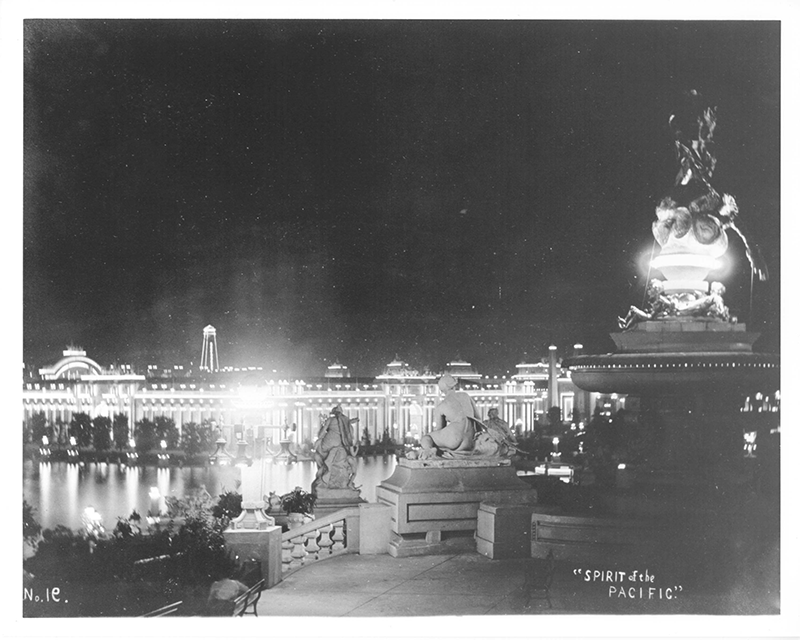 View Image
View Image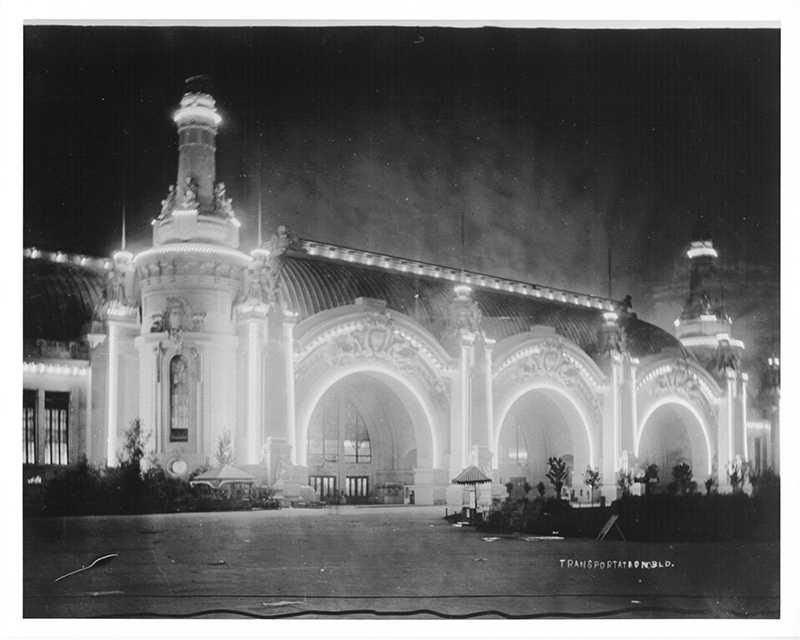 View Image
View Image